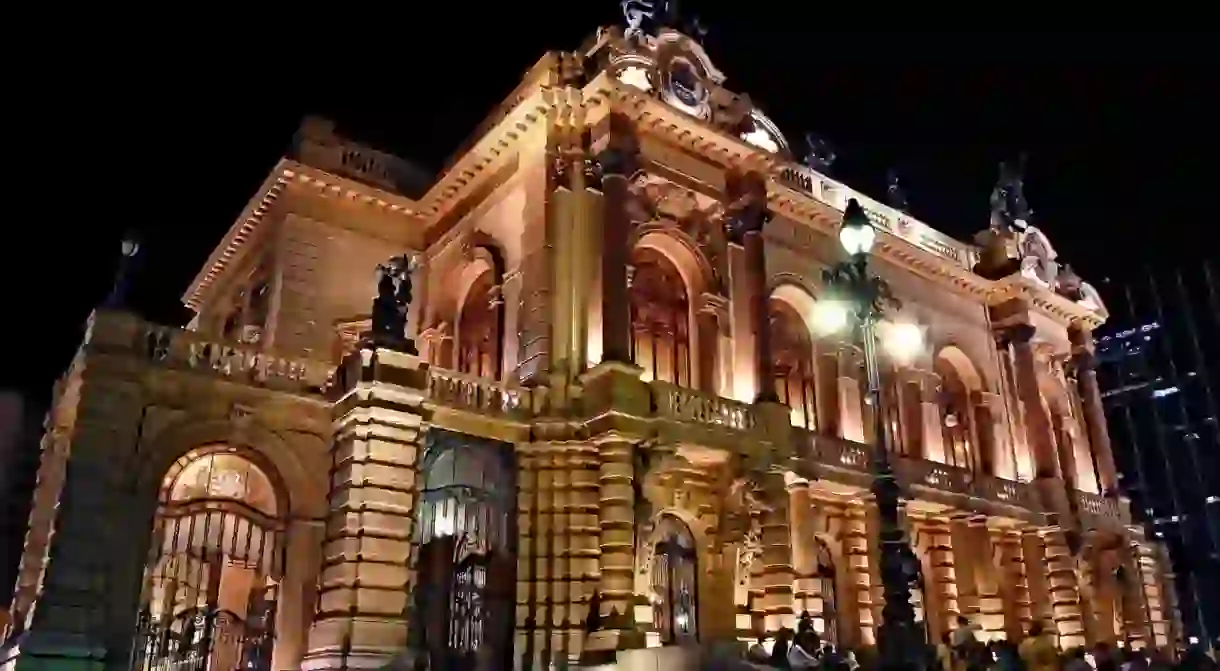An Architectural Tour of São Paulo's Historic Center

Often overlooked in favour of its surrounding trendier areas, the Historic Center of São Paulo is making a comeback. With streets being repaved, buildings renovated and new bars and restaurants opening up, locals are flocking back to the Center and becoming reacquainted with its truly majestic architecture. Take in some of Brazil‘s best architectural hotspots with our tour of this city’s most beautiful buildings.
Sé Cathedral
Beginning in the Praça da Sé, the symbolic center of the city, our tour begins with São Paulo’s biggest cathedral – also one of the biggest churches in Brazil – Sé Cathedral. Designed by German architect Maximilian Emil Hehl at the beginning of the 20th century, the cathedral was built almost entirely in the Gothic Revival style, all except from its Renaissance-style dome based on the Santa Maria del Fiore Cathedral in Florence, Italy. Tours of the church’s interior are free of charge. Don’t miss the organ, which was built in Milan and is the largest of its kind in Latin America.

Nearby food/drinks: Check out the charming café at Red Bull Station, with plenty of vegetarian and vegan lunch options.
Pátio do Colégio
Situated no more than 300 yards from Sé Cathedral is the enchanting colonial Pátio do Colégio church. This was the very first construction in the city’s history, being built by the Jesuit priests from Portugal who founded São Paulo. It has been standing since 1554 and is one of the few examples of colonial Portuguese architecture in the city. Inside there is a small chapel and museum.

Martinelli Building
One of the most historically important constructions in the city, the Martinelli Building marked the beginning of São Paulo’s expansion to becoming a true metropolis in the 1920s. In a previously low-rise city, the Martinelli, made out of brick and concrete, was the first skyscraper in Brazil and for a time was the tallest building in Latin America. Designed by local Italian entrepreneur Giuseppe Martinelli and Hungarian architect Vilmos Fillinger, it was inaugurated in 1929 and could be seen from miles around. Today it mainly houses offices, but tourists may visit its rooftop for some superb views of the city (as seen below).

Nearby food/drinks: The Café Martinelli Midi, located inside the building itself, has excellent coffee and delicious sweet treats.
Viaduto do Chá
São Paulo’s first viaduct and undoubtedly its most important when it was first built in 1892, the Viaduto do Chá spanned the Anhangabaú River valley and linked the traditional city center to the tea plantations on the other side, giving it its name (Viaduto do Chá translates as ‘Tea Viaduct’ in English). The original metallic and wooden structure was rebuilt in concrete in the 1930s in order to support the huge volume of traffic in what was a booming São Paulo. The Anhangabaú River, which used to flow underneath the viaduct, has since been channeled underground, making way for Anhangabaú Park, which is a preferred venue for festivals in the city.

Theatro Municipal
On the other side of the Viaduto do Chá is São Paulo’s leading opera house and one of the city’s architectural treasures, the Theatro Municipal. Built in 1911 after the Teatro São José burned down, it was designed by Brazilian architect Ramos de Azevedo (the square in front of the theater is named after him) and inspired by the baroque Palais Garnier in Paris. Visitors are able to take a guided tour of the building’s exquisite interior or, better yet, why not take in an opera? Tickets and times are available on the theater’s official website.

Nearby food/drinks: Check out Paribar for some traditional and hearty São Paulo lunch, overlooking the nearby Dom José Gaspar square.
Edifício Copan
One of the few examples of Brazilian Modernist architecture in the Historic Center – and certainly one of the most impressive – the 38-storey Edifício Copan was designed by renowned Brazilian architect Oscar Niemeyer and is one of a number of his works in São Paulo. When tasked with designing an apartment building, Niemeyer subverted the upright and traditionally ‘masculine’ style by building the Copan with what he regarded as distinctly feminine curves, a motif found in much of his work. It was inaugurated in 1966 and remains Brazil’s largest reinforced concrete structure.

Nearby food/drinks: The Bar da Dona Onça, located underneath the Copan building, is an excellent option for a snack and a cocktail.
Edifício Itália
The last stop on the tour, just yards away from the Copan building, is the Edifício Itália – the mammoth 46-storey skyscraper with arguably the best rooftop view of São Paulo. Designed by German-Brazilian architect Franz Heep, it was built as part of the movement in the city to create vertical housing. On the top floor, there is the Terraço Itália, a swanky rooftop restaurant with a breathtaking 360° view of the entire city. It is expensive, so if you are only here for the view, grab a drink at the bar and get your camera ready.














